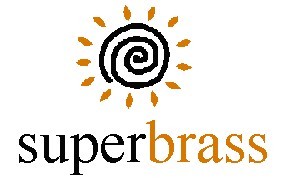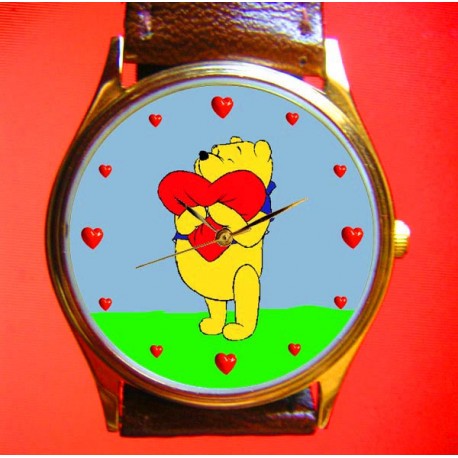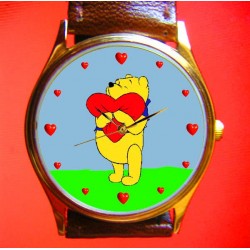No products
Comic Art Watches
- Pocket & Wrist Watches
- Music Instruments
- Brass Band & Woodwinds
- Ethnic Indian Instruments
- Guitars, Mandolins & Strings
- Violin, Viola & Cello Fittings
- World Percussion
- Nautical Brass
- Collectible Damascened Knives
New products
-

Kamala Harris 2024 Presidential Campaign Portrait Art Watch. Solid Brass Democratic Election Collectible Americana.
large format 40 mm black solid brass casing with stainless steel back...
$ 134.48 -

Kamala Harris & Tim Walz 2024 Presidential Campaign Watch. Blues. Solid Brass Democratic Election Collectible Americana Watch.
large format 40 mm black solid brass casing with stainless steel back...
$ 126.33 -

Kamala Harris 2024 Presidential Campaign Slogan Art Watch in Colors of the Stars & Stripes. Solid Brass Democratic Election Collectible Americana. Let's Win This!
large format 40 mm black solid brass casing with stainless steel back...
$ 134.48 -

Forward! Iconic Kamala Harris 2024 Presidential Campaign Slogan Art Watch in Colors of the Stars & Stripes. Solid Brass Democratic Election Collectible Americana.
large format 40 mm black solid brass casing with stainless steel back...
$ 134.48 -

Choose Courage! Iconic Kamala Harris 2024 Campaign Art Solid Brass Watch
large format 40 mm black solid brass casing with stainless steel back...
$ 121.58
WINNE THE POOH - Hunny Valentines Collectible Wrist Watch
COM-078
New product
29 mm rolled gold unisex size case, genuine leather strap, quartz movement
More info
Winnie-the-Pooh, also called Pooh Bear, is a fictional anthropomorphic bear created by A. A. Milne. The first collection of stories about the character was the book Winnie-the-Pooh (1926), and this was followed by The House at Pooh Corner (1928). Milne also included a poem about the bear in the children’s verse book When We Were Very Young (1924) and many more in Now We Are Six (1927). All four volumes were illustrated by E. H. Shepard.
The hyphens in the character's name were later dropped when The Walt Disney Company adapted the Pooh stories into a series of Disney features that became one of its most successful franchises.
The Pooh stories have been translated into many languages, including Alexander Lenard's Latin translation, Winnie ille Pu, which was first published in 1958, and, in 1960, became the only Latin book ever to have been featured on theNew York Times Best Seller List.
In popular film adaptations, Pooh Bear has been voiced by actors Sterling Holloway, Hal Smith and Jim Cummings in English, Yevgeny Leonov in Russian, and Shun Yashiro and Sukekiyo Kameyama in Japanese.
Origin
Milne named the character Winnie-the-Pooh after a teddy bear owned by his son, Christopher Robin Milne, who was the basis for the character Christopher Robin. Christopher's toys also lent their names to most of the other characters, except forOwl, Rabbit, and Gopher (added in the Disney version). Christopher Robin's toy bear is now on display at the Main Branch of the New York Public Library in New York City.[2]
Christopher Milne had named his toy bear after Winnie, a Canadian black bear which he often saw at London Zoo, and "Pooh", a swan they had met while on holiday. The bear cub was purchased from a hunter for $20 by Canadian Lieutenant Harry Colebourn in White River, Ontario, Canada, while en route to England during the First World War. He named the bear "Winnie" after his adopted hometown in Winnipeg, Manitoba. "Winnie" was surreptitiously brought to England with her owner, and gained unofficial recognition as The Fort Garry Horse regimental mascot. Colebourn left Winnie at the London Zoo while he and his unit were in France; after the war she was officially donated to the zoo, as she had become a much loved attraction there. Pooh the swan appears as a character in its own right in When We Were Very Young.
In the first chapter of Winnie-the-Pooh, Milne offers this explanation of why Winnie-the-Pooh is often called simply "Pooh":
But his arms were so stiff ... they stayed up straight in the air for more than a week, and whenever a fly came and settled on his nose he had to blow it off. And I think – but I am not sure – that that is why he is always called Pooh.
Ashdown Forest: the setting for the stories
The Winnie-the-Pooh stories are set in Ashdown Forest, Sussex, England. The forest is a large area of tranquil open heathland on the highest sandy ridges of the High Weald Area of Outstanding Natural Beautysituated 30 miles (50 km) south of London. In 1925 Milne, a Londoner, bought a country home a mile to the north of the forest at Cotchford Farm, near Hartfield. According to Christopher Milne, while his father continued to live in London "...the four of us—he, his wife, his son and his son's nanny—would pile into a large blue, chauffeur-driven Fiat and travel down every Saturday morning and back again every Monday afternoon. And we would spend a whole glorious month there in the spring and two months in the summer."[4] From the front lawn the family had a view across a meadow to a line of alders that fringed the River Medway, beyond which the ground rose through more trees until finally "above them, in the faraway distance, crowning the view, was a bare hilltop. In the centre of this hilltop was a clump of pines." Most of his father's visits to the forest at this time were, he noted, family expeditions on foot "to make yet another attempt to count the pine trees on Gill's Lap or to search for the marsh gentian". Christopher added that, inspired by Ashdown Forest, his father had made it "the setting for two of his books, finishing the second little over three years after his arrival".
Many locations in the stories can be linked to real places in and around the forest. As Christopher Milne wrote in his autobiography: “Pooh’s forest and Ashdown Forest are identical”. For example, the fictional "Hundred Acre Wood" was in reality Five Hundred Acre Wood; Galleon's Leap was inspired by the prominent hilltop of Gill's Lap, while a clump of trees just north of Gill's Lap became Christopher Robin's The Enchanted Place because no-one had ever been able to count whether there were sixty-three or sixty-four trees in the circle.
The landscapes depicted in E.H. Shepard’s illustrations for the Winnie-the-Pooh books are directly inspired by the distinctive landscape of Ashdown Forest, with its high, open heathlands of heather, gorse, bracken and silver birch punctuated by hilltop clumps of pine trees. In many cases Shepard's illustrations can be matched to actual views, allowing for a degree of artistic licence. Shepard's sketches of pine trees and other forest scenes are held at the Victoria and Albert Museum in London.
The game of Poohsticks was originally played by Christopher Milne on a footbridge across a tributary of the River Medway in Posingford Wood, close to Cotchford Farm. The wooden bridge is a tourist attraction, and It is traditional to play the game there using sticks gathered in nearby woodland. When the footbridge required replacement in recent times the engineer designed a new structure based closely on the drawings by E. H. Shepard of the bridge in the original books, as the bridge did not originally appear as the artist drew it.
Reviews
No customer reviews for the moment.






